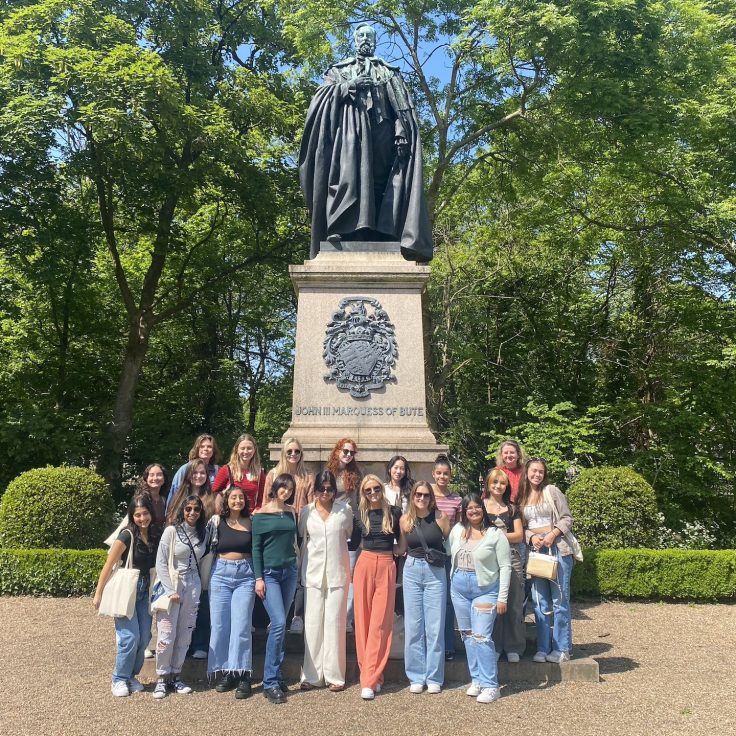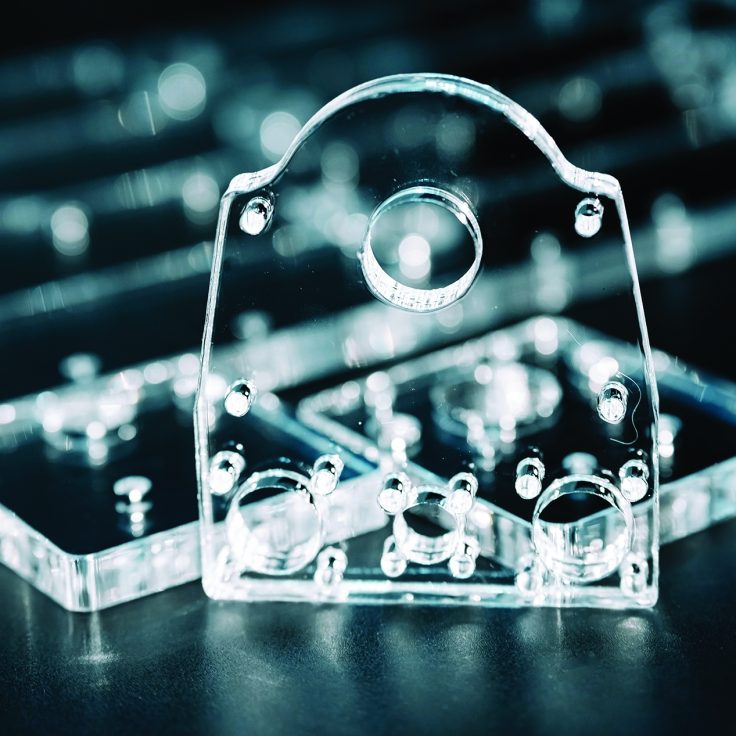
Swamp science: explore the unseen natural laws underlying your favorite sport
Amid the electric fervor of University of Florida sporting events, beyond what meets the eye, a hidden world of movement unfolds. Physicists Jeff Dror and Siyao Xu bring this often-overlooked dimension to life, helping us see the science at play.
Their insights illuminate the principles of physics that intersect with the game-changing action. “Although we cannot change the physical laws, we can creatively use them and find the beauty in physics and sports,” Xu said. Get ready to see Gator games in a whole new light
Football
The Swamp is awash in a sea of orange and blue, creating an electrifying atmosphere that permeates the air. Ben Hill Griffin Stadium buzzes with energy as the crowd’s cheers and cheerleaders’ chants echo through the stands, building anticipation as the Gators line up, ready for kickoff.
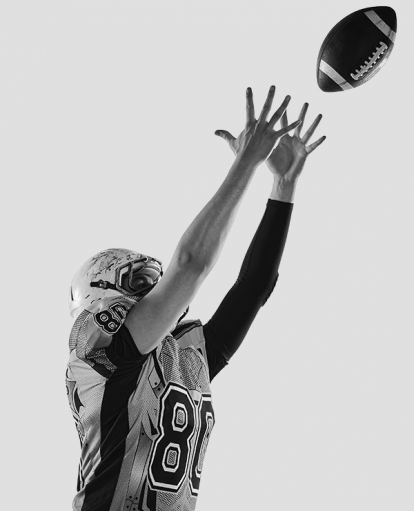
There’s the whistle, and the game is on! The Gator’s kicker sends the ball soaring down the field, and it’s caught at the 5-yard line.
Projectile Motion: How It Works
In flight, the ball experiences gravity pulling it down and encounters air resistance — akin to the sensation of “wind” blowing in our face when we run, even in the absence of actual wind, according to Xu.
The air resistance, or drag, slows the ball and causes loss of kinetic energy.
Xu offers an analogy to illustrate this phenomenon: “It’s like a boat streaming on a river that disturbs the water and creates turbulent wake behind the boat. When a ball flies and makes its way through the air, it also creates a turbulent wake behind it,” she said. “Although, we cannot see it directly.”
The opposing quarterback is on the move, he’s at the 20, the 30, he’s got a seam! He takes the snap, eyes downfield, and launches it! Wait, what’s this? A brilliant move by the defensive player. Intercepted!
Touchdown Gators!
Stability & Collision: How It Works
As the football spins through the air, gravity causes its nose to follow a parabolic, or U-shaped, arch. The spin it possesses enhances stability, making it more resistant to external forces such as wind.
The defender alters the ball’s path when intercepting the ball, using his own momentum to secure possession. When changing directions, he applies force with his planted feet. There is a collision where the kinetic energy of the moving ball is transferred to player’s hands.
Equilibrium: How it Works
Players need to maintain balance and control over their center of mass to make agile moves, avoid tackles, and reach the end zone. Understanding their body’s mechanics and the principle of equilibrium is crucial.
Baseball
The Condron Family Ballpark is the place to be. Beneath the stadium lights, the baseball field transforms into a vibrant spectacle as fans gather on the berm, armed with blankets and enthusiasm. The alluring aroma of classic ballpark fare complements the cheers and laughter that echo through the stands.
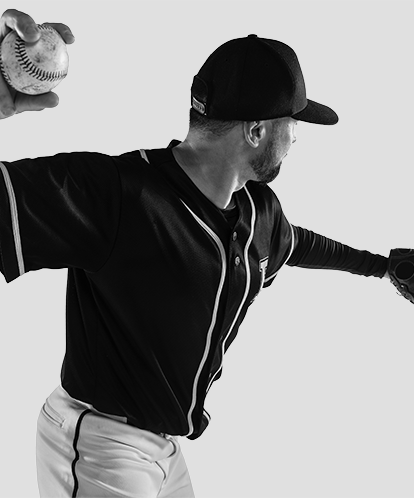
And here’s the windup, folks. The pitcher brings his leg up, his arm whips forward, releasing the ball. There’s the pitch, and the batter takes a swing! The ball is heading toward the wall, and it’s gone!
That’s a home run!
Spin: How It Works
The pitcher’s windup generates momentum, with the elevated front leg ensuring balance through opposing forces. Stepping forward transfers energy through the body, and the arm’s motion during release produces velocity and spin.
As the arm speeds up, the ball exerts more force on the fingers. Pitchers counterbalance the force by pushing back with their fingers, causing the ball to roll up their fingertips, creating spin upon release.
“If a ball is thrown straight, but the pitcher is spinning it, a force is generated with the air surrounding it that is able to push the ball,” Dror said.
This determines whether the ball moves to the left or right in its path toward the strike zone.
Energy Transfer: How It Works
Batters want to make sure that they hit the baseball at a certain point on the bat so that the energy they are putting into the bat gets transferred over to the baseball. The point on the bat that allows for the most energy transferred is called the “sweet spot.”
Basketball
The crowd roars in Exactech Arena, where rhythmic dribbling and squeaking sneakers add to the game-day symphony. The iconic “Rowdy Reptiles” student section injects an extra dose of energy, waving signs, chanting, and passionately supporting the Gators.
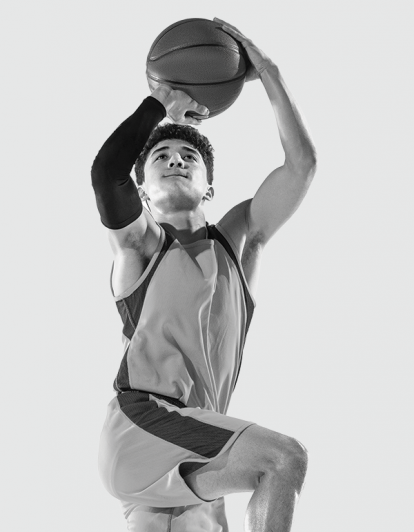
And there it is, the game is underway! The Gators win the tip and they’re moving down the court. The point guard has the ball and passes it to his backcourt teammate.
He looks for an opening, takes a quick dribble, and pulls up for the three-pointer — swish!
The Gators take the lead.
Force: How It Works
The force exerted on the ball influences its acceleration, seen when players pass by pushing it. Players use their fingertips to impart spin on the ball, which enhances control and stability for dribbling and shooting, allowing them to adjust the ball’s trajectory by forcing the ball to deviate from a straight-line trajectory.
Potential & Kinetic Energy: How It Works
When a basketball player shoots, the ball follows a U-shaped path toward the basket. To increase chance of scoring, the player should aim higher above the basket, raising the top of the curve for a greater shooting angle with more force and power.
“If you are throwing the ball, you have to do it at a certain angle to optimize your distance,” Dror said.
At its highest point, the ball has increased potential energy, determined by the force of gravity. As it descends, this stored energy turns into kinetic energy, bringing the ball downward and, ideally, into the hoop.
Gymnastics
Excitement fills the air as gymnasts, in dazzling leotards, warm up and showcase extraordinary skills on the floor, beam, bars, and vault at the O’Connell Center. They promise a night of high-flying flips, gravity-defying stunts, and a celebration of athleticism that only the UF gymnastics team can deliver.
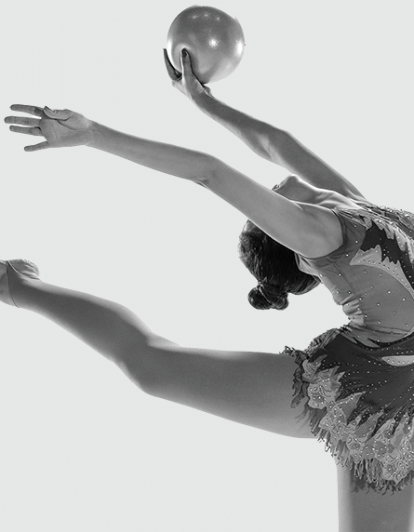
There goes our Gator gymnast, charging down the mat. She takes off with a powerful round-off, followed by a back handspring — and she’s in the air!
Torque: How It Works
In gymnastics, body rotation involves twisting, rolling, and spinning. Gymnasts initiate this rotation using torque, external rotational force generated through interactions with the floor, mat, bar, or balance beam. The force applied must be tangential to the rotating body to effectively induce and control the desired rotation.
“This is similar to the torque we apply when opening a door or a pickle jar,” Xu said.
That tumble pass had it all. And there it is — a stunning layout with a full twist.
Mass Distribution: How It Works
A gymnast, in midair, conserves rotational momentum. To influence rotation speed, a gymnast can adjust the distribution of her body’s mass in relation to the rotation axis. This can be achieved by extending or retracting the arms and legs.
By changing her pose in midair, particularly by repositioning the arms, a gymnast can initiate a twisting rotation without altering the overall rotational momentum of the body.
Read more from the Fall/Winter 2023 issue of Ytori magazine.

